The Montreal Canadiens won four straight Stanley Cups from 1976 to 1979, establishing themselves as one of the greatest teams of all-time. Although the dynasty ended with their elimination in the 1980 Playoffs, that defeat didn’t mark the end of the road for many of their top stars. Many of them moved on to new teams in the ensuing decade, and seeing these former Hab heroes in the jerseys of other clubs was more than a little jarring. Let’s look at the most notable names and see how they fared in their new duds.
Guy Lafleur – N.Y. Rangers, Quebec Nordiques
Guy Lafleur was the jewel in the crown of the Canadiens’ late-70s dynasty – a flashy superstar who dazzled crowds with his speed, grace and goal-scoring prowess. As the 1984-85 season began, Lafleur had slowed somewhat with age but was still a durable offensive threat, having scored 70 points the previous season while playing in all 80 games.
But all was not rosy in The Flower’s world.
Behind the scenes, Lafleur resented coach Jacques Lemaire’s decision to reduce his ice time. Relations with general manager (GM) Serge Savard also cooled when his former teammate refused to trade him. With his production falling, Lafleur decided he’d had enough and announced his retirement on Nov. 26, 1984. The decision shocked the hockey world and most felt the end of Lafleur’s glorious career was premature. Everyone seemed to know The Flower still had more games to play.
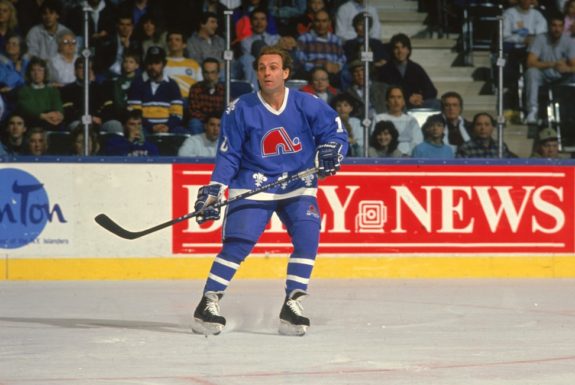
Three years, a retired number 10 hanging from the Montreal Forum rafters, and an induction into the Hockey Hall of Fame later, Lafleur set out to prove they were right. He signed on with the New York Rangers, the team Lafleur and the Canadiens vanquished in the 1979 Final for the last of their four straight Cups and showed he could still play. He scored 45 points in 67 games that season. The highlight was when he returned to the Forum for the first time and scored two goals against his old team.
Related: ‘Brass Bonanza’ – The Sound of Hockey
After a year on Broadway, Lafleur moved back to Quebec – but not to join the Canadiens. He signed with the Nordiques and played two more seasons in the provincial capital. As the 1990-91 season wound down, Lafleur announced that it would be his last. After his final game – fittingly against the Canadiens at Le Colisée in Quebec – Lafleur was the picture of contentment: “I’m happy about retiring and I’m looking forward to it” (from “Lafleur, Nordiques end with win,” Montreal Gazette, April 1, 1991).
Even though the sight of Lafleur in a Nordiques uniform seemed odd to those who remembered his glory days in the Canadiens’ bleu, blanc et rouge, this time, his retirement felt just right.
Steve Shutt – L.A. Kings
Lafleur’s longtime linemate scored 408 goals for the Habs after he made his debut in 1972, including a league-leading 60 in 1976-77. In 1983-84, his production fell to only 14 goals, and by the beginning of the next season, Shutt was seeing less and less ice time. He asked to be traded and was told he could pick his preferred destination.
Shutt chose the sunny climes of Los Angeles and looked forward to a fresh start: “Montreal is a top organization in the league and a great hockey town. I could have sat there and collected my paycheque, but I didn’t want to sit around for any team,” (from “If Kings Win the Big One, Shutt Can Provide the Champagne,” Los Angeles Times, Nov. 23, 1984).
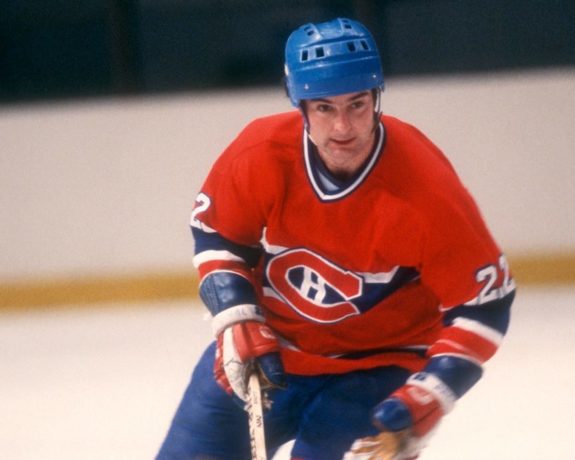
Seeing Shutt in the Kings’ purple and gold colours was a shock for many hockey fans, but they didn’t have to see it for too long. The left-winger put up a solid 41 points in 59 games for the Kings in 1984-85. However, his contract stipulated that L.A. had to keep him for its full two-year duration or return him to Montreal. Looking to go with more youth, GM Rogie Vachon opted to send Shutt back to the Habs. Not relishing the idea of fighting for a spot on the Canadiens roster, the 32-year-old decided to retire.
Serge Savard – Winnipeg Jets
After 14 seasons and seven Stanley Cups with Montreal, stalwart blueliner Serge Savard announced his retirement in August 1981. His former Habs teammate, John Ferguson, knew there were some strides still left in “The Senator’s” skates. Ferguson, then the GM of the Winnipeg Jets, took advantage of a slight technicality in the NHL waiver draft that October. Montreal, it turned out, had not tried to waive Savard before he retired, meaning he was available to any team that wanted to pick him up at the draft – which is exactly what Ferguson did.
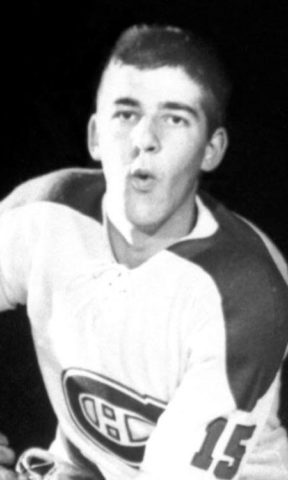
It took the Jet GM more than two months to convince Savard to come to Winnipeg, but, after his wife and sons encouraged him to do so, the 35-year-old Savard agreed and donned a different red, white and blue in December 1981. Twelve games went by before Savard registered his first point, but when he did, he did so in grand style. Facing his former team for the first time on Jan. 10, 1982, Savard tallied a goal and an assist to help the Jets earn a 4-4 tie in Winnipeg.
Savard played two years with the Jets before retiring for good. His vast experience and leadership help steady the young club in its early years in the NHL.
Larry Robinson – L.A. Kings
When Kings owner Bruce McNall offered 38-year-old free agent Larry Robinson a three-year, $1.5 million offer in the summer of 1989, it was too rich a deal for Montreal GM Serge Savard to match. Itt was off to the land of palm trees and movie stars for the 17-year veteran, who’d spent his entire career with the Habs, collecting two Norris Trophies and six Stanley Cups along the way.

“The Big Bird” would play three seasons with the Kings, lending experience to the young members of the early Wayne Gretzky-era teams. Robinson announced his plans to retire after 20 seasons during his last one in 1991-92. “It’s tough getting yourself up for an 80-game schedule after you’ve done it for 20 years,” he said in explanation of his decision. “You can only go to the well so often,” (from “Larry Robinson Hopes For Better Ending,” Los Angeles Times, March 24, 1992).
Related: Canadiens’ Ken Dryden – Truly One of a Kind
If he had gone to the well once more, the 41-year-old would have met his former team in the Stanley Cup Final when the Kings reached hockey’s biggest stage for the first time in 1993.
Guy Lapointe – St. Louis Blues, Boston Bruins
After 14 years with the Canadiens, during which time he established then-career club records for defensemen with 166 goals and 572 points, Guy Lapointe was dealt to the Blues for a second-round pick, which turned out to be long-time NHLer Sergio Momesso. Lapointe’s ice time was being cut back and, with youngsters like Gaston Gingras and Gilbert Delorme assuming larger roles on the Montreal blue line, Lapointe requested a trade. He played 62 games for the Blues and tallied a respectable 32 points.
If seeing this former member of the Canadiens’ “Big Three” defense corps (along with Larry Robinson and Serge Savard) wearing a Blues jersey wasn’t strange enough, things got even weirder with his next NHL stop.

After the Boston Bruins lost veteran D-man Brad Park to the Detroit Red Wings in free agency in the summer of 1983, GM Harry Sinden immediately called up Lapointe to see if he was interested in joining the team he’d battled so frequently during the Canadiens’ glory years. Lapointe happily accepted the offer to join his former enemies.
A broken hand limited him to just 45 games in what would be his final NHL season. Lapointe’s last game was played, fittingly enough, in the Montreal Forum on Mar. 10, 1984. The Bruins were ravaged by injuries at the time and Lapointe was pressed into service as a right-winger. A strange end in a strange uniform to a brilliant career.
Yvon Lambert – Buffalo Sabres
After the Canadiens won their fourth straight Cup in 1979, coach Scotty Bowman accepted the position of general manager with the Buffalo Sabres. A little over a year later, Bowman brought to Buffalo a familiar face from his Montreal dynasty team – winger Yvon Lambert.
Related: Brass Bonanza Silenced – The Demise of the Hartford Whalers
Toiling in the shadows of Guy Lafleur, Steve Shutt and other superstars while with the Habs, Lambert nevertheless carved out a spot on that star-studded roster by standing strong in the opponent’s crease and banging home a good number of “garbage goals.”
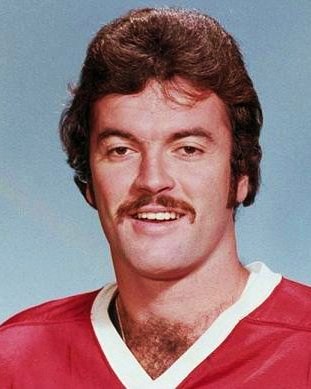
Lambert helped win that fourth Cup by scoring the winning overtime goal in the famous “Don Cherry Too Many Men On the Ice” game in the Semi-Finals against Boston. By October 1981, the Canadiens had put Lambert on waivers, where Bowman grabbed him.
It was odd seeing the familiar debonair-looking Lambert in the Sabres’ blue and gold uniform, but he scored 25 goals in 1981-82 and notched his only career hat trick in an 8-2 win over the Toronto Maple Leafs. He couldn’t crack the Sabres’ lineup in 1982-83, however, and spent the next two seasons in the minors before hanging them up.
Doug Jarvis – Washington Capitals and Hartford Whalers
Doug Jarvis was part of all four Cups in the Habs’ late-70s run, but his two greatest individual accomplishments came in different uniforms long after the dynasty had crumbled.
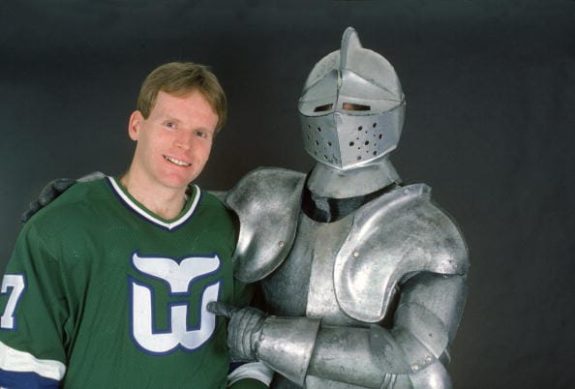
Jarvis entered the Montreal lineup on opening night of the 1975-76 season, the first year of the Canadiens’ four-Cup streak, and played in every game that year. Although he never put up anywhere near the numbers of high-flying teammates like Lafleur or Shutt, the hard-working centerman established himself as one of the best two-way forwards in the game.
When the Canadiens traded Jarvis to the Washington Capitals in September 1982, he still hadn’t missed a game, and when he was dealt to the Hartford Whalers in Dec. 1985, his consecutive game streak – 560, to be exact – was still intact.
On Boxing Day in 1986, Jarvis gave himself a belated Christmas present when he suited up for his 915th straight game and broke Garry Unger’s NHL iron-man record, (from One game at a time: 31 years on, Canucks coach Doug Jarvis’ Iron Man streak still stands,’ The Province, 12/28/2017). He did it right in his old haunt, the Montreal Forum. His run ended at 964, two games into the 1987-88 season – not because of injury, but because the Whalers made the 32-year-old a healthy scratch.
Jarvis retired later in the season, but he could look back proudly at his incredible iron man streak, as well as the Selke Trophy he won in 1983-84 with the Washington Capitals as the league’s premier defensive forward and the 1987 Bill Masterton Trophy for dedication and perseverance.
The paths that many of the Canadiens stars of the late 1970s took in the 1980s are often forgotten, but nevertheless form interesting final chapters to their storied careers. The Canadiens franchise, meanwhile, won a Stanley Cup seven years after the dynasty ended, in 1986 and won another, their most recent, in 1993 – by which time the stars of the 70s were settled into retirement, their accomplishments firmly etched in hockey history.